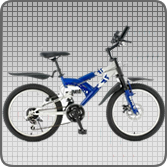| TEL: | 86-319-7980163 |
| 86-13576783980 | |
| 86-18931959102 | |
| FAX: | 86-319-7980163 |
| email: | edwin@sunrisingcn.com |
| MSN: | sunrising168@hotmail.com
|
| skype: | sunrising8866 |
|
Bicycle Traffic Safety |
|
time: 2010-8-26 10:51:55 |
Bicycle Traffic SafetyBicycle traffic accidents, also called cycling accidents, pedalcycle accidents, bicycle crashes, pedalcycle crashes, and bike-car collisions, can be avoided through understanding why they occur. There are many people who think that bicycling is especially dangerous, not recognizing that cyclists travel more miles per fatality than pedestrians and more hours per fatality than passenger vehicle users. However, saying that cycling is fairly safe on the average does not mean that individuals shouldn't make efforts to make their own cycling more safe. We see a vast difference in the safety of selected groups of cyclists; for instance, children have 720 accidents per million hours while a group of British cyclists averaged just 66 accidents in the same amount of cycling time. We also see strong differences between individuals. Some have frequent, serious falls and/or collisions, and others have few accidents or none. In my 100,000 miles of cycling, I have fallen off of my bike six times, resulting in skin abrasion twice and no visits to the doctor. All of my own accidents, by the way, were due to my own stupidity and could have been easily avoided. [NOTE: In February 2002, I had my seventh fall, again my own fault, and this time I went to the hospital with a broken hip.] One choice a bicyclist can make is to be fatalistic about the matter and to decide that some cyclists are lucky and others are not, and another choice is to work to prevent future falls and collisions. However, the decision to try to be careful in itself is not safe enough. Many fatalities and injuries occur among those who were trying to be careful, but who weren't following the correct procedures. For example, cyclists who ride on the sidewalk, on wrong side of the road, and at the extreme edge of the pavement are all fearfully trying to prevent injuries, but the methods they employ greatly increase their chances of getting struck by cars. Analysis of bicycling accidents and of cyclist fatalities demonstrate that cyclists are most safe when they operate their bicycles as vehicles. Motorists scan the highway in front of them and on either side watching for other vehicles. They do not watch as carefully for pedestrians, and they do not anticipate fast-moving bicycles traveling on sidewalks, crosswalks, and shoulders, especially when traveling in the opposite direction from the rest of the traffic. For this reason, bicycle traffic laws are almost the same as those for motor vehicles. All state laws either define bicycles as vehicles or give cyclists the rights and responsibilities of vehicle operators. Unfortunately, police do not enforce these laws, probably on the principle that only the cyclist is likely to be injured. In fact, in some areas, cyclists are encouraged to ride on sidewalks where they are less safe or to use bikelanes which violate the rules of normal traffic behavior. The advice I provide in my articles is based on my own experience in traveling by bicycle and on accident analyses that I have read. For those needing more basic advice, John Allen and Wayne Pein both have safety handbooks online |



